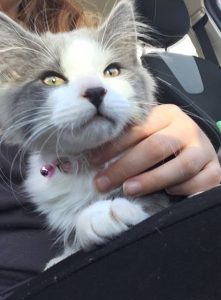Home
While Edward Chamberlin said “stories give meaning and value to the places we call home” (Chamberlin), it was hard for me to pinpoint this to any stories that would have impacted my life in a significant way. Of course there were many stories my mom read to me, as well as stories I read by myself when I was a kid, but those stories do not resonate with me in a way that they affect my connection to “home,” except for one – Love You Forever, written by Robert Munsch. When I was older I read quite a few books by Canadian authors, or books referencing Canada, but never really connected this to my sense of what is home, or what it means to be Canadian. Don’t get me wrong though, I feel distinctively Canadian. I love Canada. It never crossed my mind to live anywhere else, at least not permanently.
When people talk about their home countries, they often connect the national anthem with their country and their sense of home. It starts with referencing to the anthem as “our” national anthem, already installing a sense of community and home by this very notion. And in “our” national anthem Sir Adolphe-Basile Routhier says, “Ô Canada! Terre de nos aïeux” (“O Canada, land of our ancestors”) (O Canada) in the very first two lines. Although this is not really true for myself and many other Canadians whose ancestors were not born here , it somehow captivates and roots you. So one comes to realize that most Canadian’s ancestors are actually not from Canada. Most people’s family may have been born in Canada, but, going back a few generations, most of them will be of European or Asian ancestry (Ethnic Origins). Ironically the First Nations are the only people who can claim they have true Canadian ancestry, but in today’s world those lines tend to blur. Canada is a melting pot of people from different nations and cultures. It is a miracle that people from so many diverse backgrounds find enough common ground to all call this place home. I also call Canada home, although I have Russian, Swedish and English ancestry.
I can’t find the words to describe the feelings I get when I think about what home really means to me. For me home provides security. That, however, is not universal and refugees might have memories about home, that are vastly different and still they are calling this dangerous place home. So does home equal security? It can, but it doesn’t have to.
On a more basic level, the concept of home is something shared by all the people who live in one place and call it home. One thing that people all over the world have in common about home is their feelings of familiarity. This is what differentiates a foreign place from your home. A familiarity gained through memories gathered at that particular place, which might, or might not, include a feeling of safety and security, but always a sensation of belonging – being rooted to a place. For me, this sensation of belonging to a place, the familiarity, is what it really means to call a place home, like I do with Canada.
There is the saying that “Home is, where your heart is,” and it is true that one can only feel truly at home when one is connected with the place. My connection to Canada comes from a lifetime of memories I made here in Canada. I would say one could argue that memories are a story as well. The most basic form of a story, rooted in factual events that you tell yourself repeatedly when you recall a particular memory.
For most people memories make up the largest part of stories, connecting them with a place. Once you have enough memories, you slowly start to call a place home. Over time, the place you call home might even change when you form new memories, new stories, of a new place. More vivid than the old stories, slowly growing in numbers, changing your perception of what is home.
Looking at it like that, my connection to Canada is indeed rooted in stories. Not stories I have heard or read, but stories I was in which I have committed to memory. Stories that, from their point of creation, will always be a part of me, giving meaning to this place I call home. Canada is a beautiful country, but these stories make it more than that, allowing it to come alive and become my home. My perception of home is a romantic one; other people’s might be pragmatic. However, I believe that everybody who lives in one place for a long time, building up memories will have some kind of connection to this place.
I’m sure many people taking this course also call Canada their home. And, even if two of us are neighbours, our feelings about what is home, although physically next to each other, can differ in many ways, depending on the stories we connect with it. In the end, home is a very abstract concept and not just bound to the place you live at in that particular moment of time. I believe that’s a good thing, as it allows you to make a new home, should you ever want to do so. You are not limited to one place. You are free to make new memories. New stories. New homes.
Chamberlin, J. Edward. If This is Your Land, Where are Your Stories?: Finding Common Ground. Vintage Canada Ed., Vintage Canada, 2004.
“Ethnic origins, 2006 counts, for Canada, provinces and territories – 20% sample data.” Statistics Canada, 6 Oct. 2010, http://www12.statcan.ca/census-recensement/2006/dp-pd/hlt/97-562/pages/page.cfm?Lang=E&Geo=PR&Code=01&Table=2&Data=Count&StartRec=1&Sort=3&Display=All. Accessed 25 Sept. 2016.
“O Canada.” Citizenship and Immigration Canada, www.cic.gc.ca/english/celebrate/pdf/National_Anthem_e.pdf. Accessed256 Sept. 2016.

